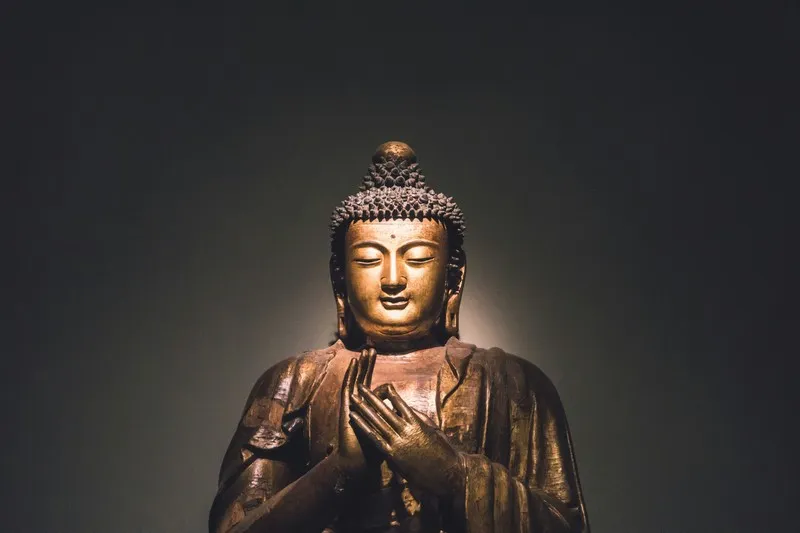Table of Contents
- Introduction to Samudaya in Buddhism
- The Four Noble Truths: Contextualizing Samudaya
- Sociological Dimensions of Samudaya
- Applying Samudaya to Contemporary Issues
- Paths to Addressing Samudaya
- Conclusion
Introduction to Samudaya in Buddhism
The concept of samudaya is central to Buddhist philosophy, particularly as it pertains to the Four Noble Truths. Originating in ancient India with the teachings of Siddhartha Gautama, the Buddha, samudaya refers to the origin or arising of suffering (dukkha). It encapsulates the Buddhist understanding of why suffering exists and forms the second of the Four Noble Truths. For sociologists and other scholars of human behavior, samudaya provides a profound framework for examining the roots of suffering not only in individual experiences but also in social structures and cultural systems.
By exploring samudaya through a sociological lens, we can better understand its implications for collective life, human relationships, and societal well-being. This article unpacks the concept of samudaya and examines its broader relevance to sociological theories and practices.
The Four Noble Truths: Contextualizing Samudaya
The Framework of the Four Noble Truths
To fully appreciate samudaya, it is essential to place it within the context of the Four Noble Truths, which are:
- Dukkha: The truth of suffering.
- Samudaya: The truth of the origin of suffering.
- Nirodha: The truth of the cessation of suffering.
- Magga: The truth of the path leading to the cessation of suffering.
Each of these truths builds on the other, offering a pathway from understanding suffering to achieving liberation. Samudaya occupies a critical position in this framework by identifying the root causes of suffering, thereby enabling the formulation of solutions.
Defining Samudaya
In the Buddhist tradition, samudaya is often explained as the arising of suffering due to craving (tanha). Craving manifests in three forms:
- Craving for sensual pleasures (kama-tanha): The desire for physical and sensory gratification.
- Craving for existence (bhava-tanha): The longing for continuity, being, and permanence.
- Craving for non-existence (vibhava-tanha): The wish for annihilation or escape from pain.
These cravings are rooted in ignorance (avijja), which obscures an individual’s understanding of reality and perpetuates the cycle of suffering. In sociological terms, samudaya can be viewed as a theory of causation that emphasizes the interplay between individual desires and systemic forces.
Sociological Dimensions of Samudaya
Craving and the Social Construction of Desire
From a sociological perspective, samudaya invites us to consider how desires are shaped by social structures and cultural norms. Cravings for material possessions, status, and recognition, for instance, are often constructed and reinforced through:
- Capitalist economies: These systems promote consumerism and the pursuit of wealth as markers of success. In capitalist societies, individuals are encouraged to equate material acquisition with happiness, which fosters a relentless pursuit of goods and services that rarely satisfies deeper human needs.
- Media and advertising: Media industries play a pivotal role in constructing desires by portraying idealized lifestyles that are often unattainable for most individuals. Advertisements use psychological tactics to create dissatisfaction with current possessions, pushing people to consume more in search of happiness and fulfillment.
- Social stratification: Societal hierarchies based on class, race, and gender contribute to the creation of aspirations for upward mobility and social validation. For example, individuals from marginalized groups may experience intensified cravings for status and recognition due to systemic exclusion and inequality. Social comparison, particularly in highly stratified societies, reinforces feelings of inadequacy and the desire to “keep up” with societal expectations.
Understanding samudaya in this context reveals the ways in which suffering is not only a personal experience but also a collective phenomenon perpetuated by societal institutions. This perspective underscores that individual cravings are often products of larger cultural narratives and economic systems, making samudaya a crucial concept for analyzing societal well-being.
The Role of Ignorance in Social Systems
Ignorance (avijja) plays a pivotal role in sustaining suffering. Sociologically, ignorance encompasses a multifaceted lack of awareness that perpetuates systemic and individual suffering. This ignorance manifests in several key ways:
- Racism and prejudice: Ignorance about cultural diversity, historical oppression, and structural racism fosters discriminatory behaviors and entrenches systemic inequities. Individuals and institutions alike fail to acknowledge the deep-seated roots of racial injustice, perpetuating cycles of exclusion and conflict.
- Environmental degradation: A lack of understanding about the interconnectedness of ecosystems and the long-term impact of human activity leads to unsustainable exploitation of natural resources. This ignorance often stems from prioritizing short-term economic gains over ecological health, contributing to global challenges such as climate change and biodiversity loss.
- Economic inequality: Ignorance about the mechanisms of wealth and power concentration—including labor exploitation, unequal access to education, and biased policy-making—sustains vast disparities in economic opportunities. This lack of critical awareness fosters a culture of complacency and impedes meaningful reform.
These forms of collective ignorance align with the Buddhist concept of avijja, illustrating how the inability to perceive interconnectedness and systemic causality perpetuates societal suffering. By recognizing and addressing such ignorance, societies can move toward greater equity and harmony.
Applying Samudaya to Contemporary Issues
Mental Health and Individual Suffering
Get the full article AD FREE. Join now for full access to all premium articles.
View Plans & Subscribe Already a member? Log in.





